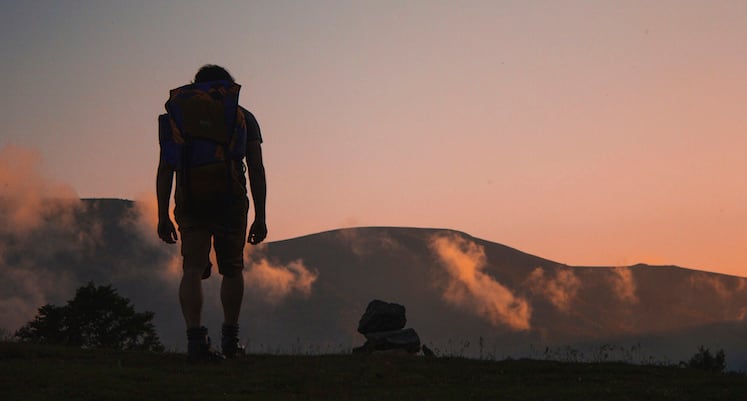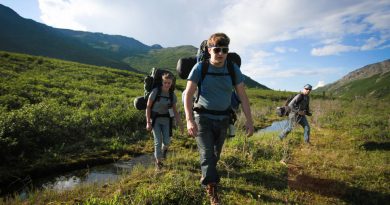How To Recover Today and Hike Stronger Tomorrow
An expert personal trainer shares tips on a post-hike recovery regimen that’ll keep your trail legs strong.
1. Coast into camp to reduce cramps
Recovery should start before you reach camp. When you are within 5 to 10 minutes of camp, slow your pace to a lower intensity. This will give your body time to slowly transition from activity to a resting state. A few minutes at a lower intensity will allow your body to remove waste generated by strenuous activity, prevent blood from pooling in the lower extremities, and gradually cool the body temperature. This benefits backpackers by reducing the risk of fainting by just falling over at the end of the day, and reduces the risk of cramping.
2. Stretch now or limp tomorrow
Five minutes of stretching can dramatically reduce soreness and cramping by restoring muscles to their normal lengths. Focus on the prime muscles used for backpacking: Calves, hamstrings, quadriceps and hip flexors. Move into the stretch until you feel mild to moderate tension and hold the stretch for 20 to 30 seconds. This will allow the muscle to relax to a resting state. Avoid bouncing or moving in and out of the stretch.
3. Eat and drink while setting up camp
Take advantage of the 30- to 45-minute post-exercise window when your body will maximize absorption of carbohydrates, protein and water. A good guide for carbohydrates is approximately 1.5 grams of per kilogram of body weight. Granola, energy bars, shot blocks and powdered Gatorade-type mixes work especially well for this purpose. Your muscles are also craving a small amount of protein to start the repair of muscle tissue at this time (approximately 15-20 grams). Beef jerky, hard salami and nuts are effective options. Consume the protein and carbohydrates with 16 to 24 ounces of water to start replenishing the muscles for the following day. This will supercharge the recovery process and will help reduce muscle soreness from a long day on the trail.
4. Rehydrate like your performance depends on it (it does)
When you arrive in camp, you will probably be in a dehydrated state to some degree. It is much easier to rehydrate in camp than on the trail. A good goal is 16 to 24 ounces of water per hour. Try to do this every hour for at least 2 to 3 hours and reduce the amount as you get closer to bedtime. This should help to reduce the number of times you have to get up in the middle of the night to relieve yourself.
5. Don’t fall over until you have dinner
Within two hours of reaching camp, you should have a full meal that includes a balance of carbohydrates, protein and fat. You should aim for approximately 1.5 grams of carbohydrates per kilogram of body weight and another 15 to 20 grams of protein. Most freeze-dried backpacker meals will provide enough calories, but be sure to check the package. I usually have to eat two servings (a whole bag) to get enough calories and protein to refuel properly. Bean-and-rice burritos are a great vegan option to get a complete protein and adequate carbohydrates.
James Fisher (coachjamesfisher.com) is a National Academy of Sports Medicine (NASM) Certified Personal Trainer and Corrective Exercise Specialist. He lives in Sedona, AZ, where he trains recreational athletes to be ready for any adventure they can imagine.
The article was originally seen at https://www.backpacker.com/skills/how-to-recover-today-and-hike-stronger-tomorrow
Originally posted 2018-04-27 20:03:00.




